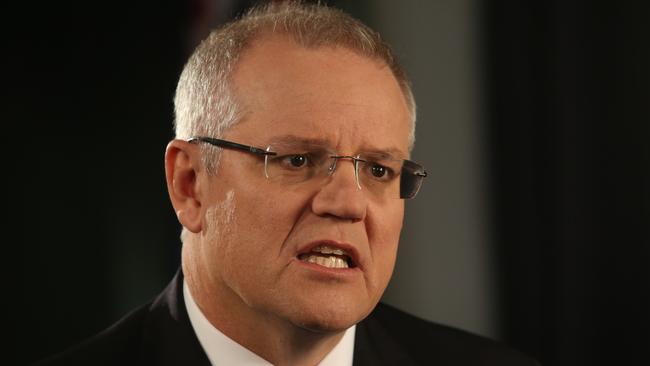Coalition strays from its brand
The Coalition’s “branding” as a low-taxing party does not actually match reality. It is, to be clear, bulldust.

It’s hard to imagine anything more ridiculous than a hard limit on tax receipts as a percentage of GDP, especially an arbitrary one like 23.9 per cent.
Where is the report of the commission of inquiry into the optimum level of tax receipts as a percentage of GDP in the 21st century, including international comparisons? Or even some kind of intellectual support for the idea that gross domestic output is the right comparison for measuring tax? Where, in fact, did this weird idea come from?
It happens that, according to last year’s budget papers, tax receipts have only gone above 23.9 per cent of GDP four times out of the past 47 years, and the ratio was forecast to stay below it for the next four years as well.
But those four years — 2000-01, 2002-03, 2004-05 and 2005-06 — paid off the national debt entirely and established the Future Fund with capital of $18 billion, which the FF has turned into $140.8 billion in 12 years by being left alone to get on with the job good long-term investing.
But we’ll have no more of that, thanks very much! No big surpluses, for us! It’ll be 23.9 per cent from now on and no more.
And it’s not as if the Coalition is applying the same sort of discipline to spending, or proposes to. There is no sign of a hard limit on spending as a percentage of GDP, no way.
In fact the Coalition inherited a payments to GDP ratio of 24 per cent and quickly ran it up to 25.6 per cent. It currently sits at 25.1 per cent, not that there’s anything bad about that, in fact government spending at a quarter of the economy is not too bad at all.
Which is the point: government expenses are rising because of the infrastructure needs of a growing population, the health needs of the ageing population and the NDIS.
What is the correct level of taxation to fund the modern demands on Australian government? We don’t know because this government has plucked 23.9 per cent out of thin air for political reasons.
What are those political reasons? First, a crude, ideological obsession with the idea that tax is bad and second, the need for some intellectual basis for election year tax cuts when the budget is in deficit, when you are supposed to be the party that hates deficits.
As for the first reason, the Coalition’s “branding” as a low-taxing party does not actually match reality. It is, to be clear, bulldust.
Using the historical data in last year’s budget paper no. 1, we find that the average tax to GDP ratio under Coalition governments has been 22.1 per cent and under Labor governments it has been 20.6 per cent.
What’s more the government cash flow statement for the nine months to March, released by the Department of Finance on April 27, reveals a familiar pattern.
That statement compares year-to-date aggregates with the forecasts in MYEFO, released last December. On that basis YTD outgoings were 0.7 per cent less than MYEFO and tax receipts were 1.6 per cent more.
But if we compare the nine months to March with the same period last year it’s a totally different story.
Payments of $325.56 billion were 2.3 per cent more than the same period last year, including an 11.7 per cent increase in “payments for goods and services”, and a 2.2 per cent cut in “personal benefit payments”. So the only real spending discipline was applied to welfare.
Receipts, on the other hand, increased a whopping 9.3 per cent, and within that, taxes received jumped 10.3 per cent.
So the key reasons the budget is in good shape right now are that welfare payments have been chopped and taxes have increased more than 10 per cent. The first of those is perhaps something the Coalition would be proud of, but the second is definitely off-brand, as usual.
As for the hard cap of 23.9 per cent providing the policy footings for tax cuts, no doubt Treasurer Scott Morrison reckons he has come up with a tremendous wheeze: a form of tax indexation, as briefly tried by Malcolm Fraser in 1976, except it’s non-automatic.
That is, you get to posture as fiscally prudent while dishing out tax cuts, and unlike with tax indexation, you get to decide how the tax cuts are distributed.
But at least indexing the tax scales to the CPI made some kind sense, whereas linking the overall tax receipts to GDP makes no real sense beyond the superficial.
* Alan Kohler is publisher of The Constant Investor





